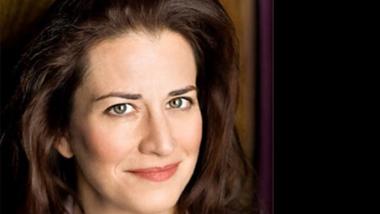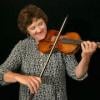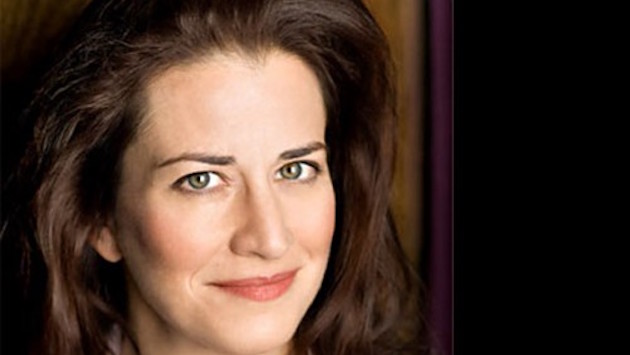
In a classic battle of great artists vs. lesser venue, Berkeley Festival & Exhibition’s Monday evening (June 4) concert, “Nasty Women, ou Femmes méchantes: French Baroque Cantatas of Retribution,” saw the untempered rage of women tethered by the untamed acoustics of Berkeley’s St. Mark’s Episcopal Church. Despite the glorious sounds pouring forth from the gifted foursome of Christine Brandes, soprano; Elizabeth Blumenstock, violin; Mary Springfels, viola da gamba; and Katherine Heater, harpsichord, what reached the audience, especially those seated farther back in the large, open, and extremely resonant venue, was a dismaying blend of grayish instrumentals and gargling vocals.
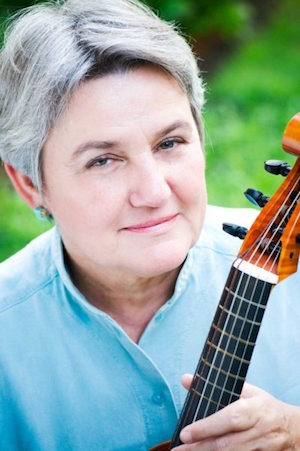
It was certainly not the performers’ fault that, as sound waves traveled out from the pulpit in the excessively resonant, cavernous venue, the leading edge and high overtones of notes quickly lost brilliance while undertones maintained their strength. Brandes suffered most from this natural effect. Her admirable soprano still retains its strength, beauty, and admirable steadiness at the top of her range. Lower down, however, especially in the first half of the program before her vibrato had settled, the acoustic made mincemeat of her efforts.
Nor did the acoustic honor the instrumentalists supporting her, who had no way to compensate for the fact that Brandes’s whirring undertones predominated over their fine-tuned sounds.
Most successful was the instrumental trio’s rendition of Jean-Marie Leclair’s Sonata in A Major, Op. 9, No. 4. This work’s opening Andante spirituoso is heavenly. (Alas, what may be the work’s only recording, on Chandos, is out of print. It is available, however, as a CD quality flac download from the UK’s Presto Classical.)
Even though Blumenstock’s brilliant and unique sound was sorely diminished, from my seat in row K, her heavenly sweetness and singing tone came through in spades. Playing as if one with the spiritual essence of Leclair’s creation, Blumenstock poured forth one blessed glissando after the other, bathing the audience in warmth and delight.
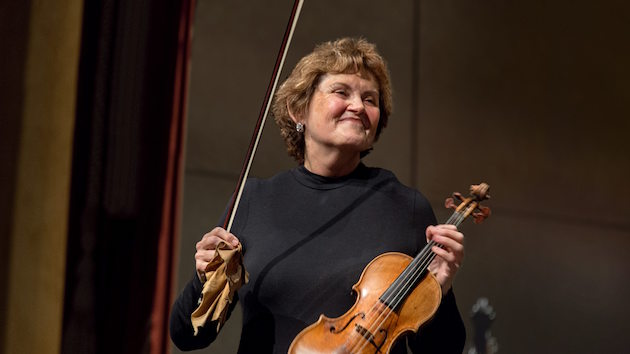
Although Springfels’s tuning was occasionally suspect in the ensuing Allegro, the infectious high spirits of her playing were irresistible. The Sarabande was deeply touching, and the concluding Allegro a fabulous romp. If these musicians ever record this sonata, you know who will be first in line for it. If the other instrumental on the program, Marin Marais’s Sonerie de Sainte-Geneviève, did not fare as well, it was only because the acoustic clarity essential its basso continuo lines was compromised.

The evening opened with the cantata Judith by Elisabeth-Claude Jacquet de la Guerre. Despite a surname that translates “of the War,” de la Guerre’s writing is far stronger on lyricism than rage. According to biblical Apocrypha, from which the libretto is taken, Judith, struck a blow for the Lord by getting the general of the Assyrian conquerors drunk and then decapitating him, but you’d never have guessed as much from de la Guerre’s bloodless musical line.
Even though Judith’s rage was barely indicated in de la Guerre’s score, Brandes struck a plethora of defiant poses as she did her best to project her voice through the church. Unfortunately, the majority of the writing hovered in the middle of the range, where the undertones of Brandes’s vibrato were strongest. Judith’s victory was barely felt.
Brandes was far more successful in the program’s concluding work, Louis-Nicolas Clérambault’s take on the Medea myth. Although Clérambault’s Medée was published in 1710, 17 years after Marc-Antoine Charpentier’s better-known opera, his writing is less forceful in its expression of rage.
Regardless, Brandes benefitted greatly from Clérarambaut’s willingness to explore the dark underbelly of humanity, as well as his decision to set more of his vocal line higher. Singing with strength and determination while working to narrow her vibrato, she mostly managed to cut her way through the acoustic haze. The instrumentalists made the most of their short solo flourishes. It was a fitting cap to an evening whose theme was triumph over adversity.
May the evening’s foursome grace us with their talents again soon. And may the next director of The San Francisco Early Music Society’s Berkeley Festival & Exhibition ditch St. Mark’s entirely, and instead schedule all events in First Congregational Church, Hertz Hall, and other acoustically superior venues.

